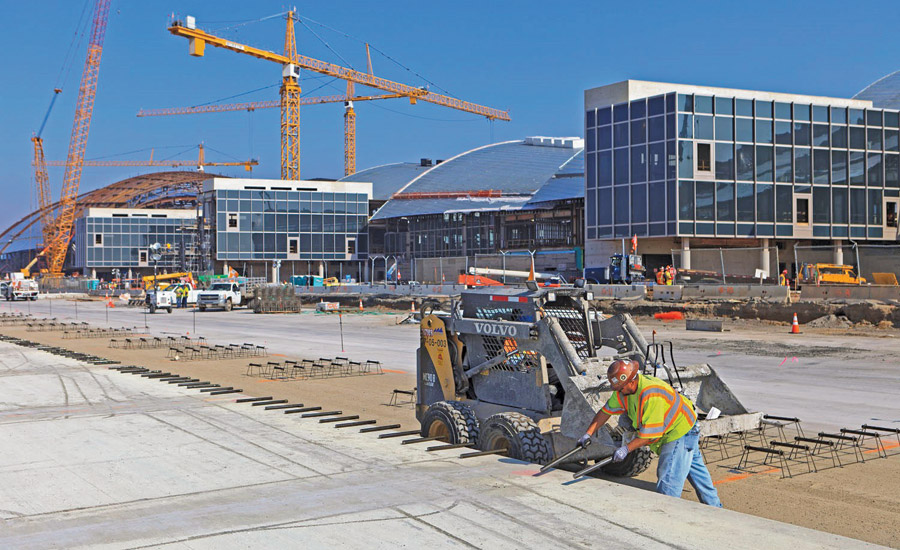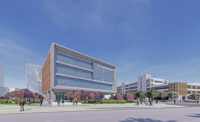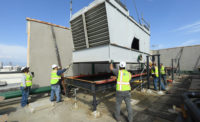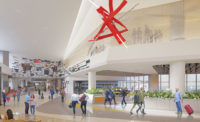There is a cautious optimism among West Coast design firms following a continued increase in business last year, but the long list of unknowns that could impact the wider economy continues to temper industry expectations.
The leading 50 firms on ENR California’s Top Design Firms list—which includes Hawaii—reported total revenue of almost $6.4 billion for 2022, a 4.7% increase over the same group’s combined 2021 revenue. That performance was a slowdown from last year when design firms in the region recorded a 7.65% increase.
In the Northwest states—Oregon, Washington and Alaska—there was a turnaround in fortunes as the leading 40 companies reported 2022 revenue of $1.93 billion, a 16% increase over the total for the year prior. The total for calendar year 2021 was down 6% from 2020.
Peter Tateishi, chief executive officer of AGC of California, the nation’s largest chapter with 900 members, is sanguine about the prospects for design firms going forward. He attributes that to two primary factors: the relatively low rate of cancellations and the fact most companies currently have healthy backlogs.

The Cordoba Corp. recently completed the $75-million Kinesiology Labs and Aquatics Center at Long Beach State Community College.
Rendering courtesy Cordoba Corp.
At the same time, wariness is evident among owner/developers due to concerns about interest rate hikes and slower growth projections. Left unchecked, these factors could metastasize into something far more severe that rocks the entire economy.
“We also hear about a recession, but we’re not there yet. Employment is high, [and] we need more workers, not less, so we don’t have the typical recession indicators,” he says. “We’re marching forward as though things are OK, but there’s a looming threat out there.”
Offsetting the danger is a momentous amount of investment in infrastructure. The Infrastructure Investment and Jobs Act (IIJA) is slated to provide $100 billion in federal funds to California to improve roads and bridges. Many other federal, state and local initiatives to bolster infrastructure across the West Coast are slated to come online soon as well.
Brent Diemer, executive vice president and CFO for Seattle-based Parametrix, says the strength of the IIJA investment is expected to offset any reduction in revenue from the other public sources.
“However, even with the federal funding, we do have some concern around state and local matching-fund requirements should public revenues stagnate, which would ultimately result in delayed and/or canceled projects,” he explains.
The biggest immediate concern he faces is the tight labor market. “By far, acquiring and retaining the talent to meet the market demands is at the top of our risk register. And this is not just our talent but also our clients’ access to talent required to procure and oversee projects,” Diemer says.
Tateishi notes that there are ongoing efforts to bolster the workforce both by the industry and state agencies. One grant, from Equal Representation in Construction Apprenticeship (ERiCA) for $500,000, is the largest ever received by the AGC Construction Education Foundation’s (AGC CEF) workforce development program.

Northwest infrastructure investments such as the $28.2-million US20 Safety upgrades in Albany and Corvallis, Ore., are underway.
Photo courtesy David Evans and Asscoiates Inc.
Building Momentum With Infrastructure
Kimley-Horn illustrates the positive trend among design firms in the region. The company recorded $248.3 million in 2022 revenue for the California region, a 30% increase from the year prior allowing it to rise in the ranking from No. 10 in 2022 to No. 6 in 2023 on the ENR California Top Design Firms list.
According to Steven E. Lefton, the president of the Raleigh-N.C.-based company, the key to success is diversifying their work and balancing public and private-sector projects with a focus on “hiring and thoughtful integration to collaborative support serving clients across a broad spectrum of market sectors and supporting the personal passions of our employees.”
“By far, acquiring and retaining the talent to meet the market demands is at the top of our risk register.”
—Brent Diemer, Executive Vice President & CFO, Parametrix
Kimley-Horn has been involved in a number of projects that are part of the ongoing expansions and upgrades at Los Angeles International Airport. These include the recently completed $1.73-billion Midfield Satellite Concourse North and the $1-billion LAX Consolidated Rent-A-Car facility expected to be completed next year.
Jason Matson, California regional leader for Kimley-Horn, says, “We remain optimistic about the Golden State in 2023. Our public and private sector diversity and our geographic reach across the state will continue to support California’s priorities of sustainability, transportation and housing.”
Already, there is evidence of growing momentum. AGC reports that from February through March this year, the state led the nation in increased construction jobs.
In order to accelerate infrastructure development in California and better take advantage of IIJA funding opportunities, California Gov. Gavin Newsom recently launched an “infrastructure strike team” to identify and expedite key projects through better coordination among government agencies.
The legislation would promote project delivery strategies such as progressive design-build as well as permit reform and changes to state administrative records laws and the California Environmental Quality Act.
Private investment for education, health care and other key sectors is expected to continue its winning streak.
Los Angeles-based Cordoba Corp.—currently celebrating its 40th anniversary—recently completed two projects at Long Beach State Community College, where it provides comprehensive PM/CM services. On 18 acres, the multi-award-winning $75-million Kinesiology Labs and Aquatics Center includes facilities for multiple sports and 12,000 sq ft of support facilities. The $77-million Building M Project is the first state-funded, design-build project in the California Community College system and serves Language Arts and Computer and Office Studies and student services.
Those projects are part of a strong portfolio that saw the firm post California and Hawaii revenues of $6.6 million in 2022.

Large Northwest projects like the $6-billion Interstate Bridge Replacement from Vancouver, Wash., to Portland, Ore., promise to keep companies busy.
Photo courtesy Parametrix
Crossing Borders for Opportunities
The dip in revenue for Northwest design firms in 2021 looks more and more like the exception to prove the rule as increases tallied last year essentially wiped out the shortfall. Between 2020 and 2022 the revenue for the leading 40 firms in the region rose 8.4%.
Case in point—Parametrix’s performance. While the company’s regional revenue of $108.4 million for 2022 was slightly down from 2021, the performance over the longer term has been positive, says Diemer.
“Over the past few years, our revenue in the Northwest has grown at a 25% rate, fueled by strong transportation and environmental markets,” he says.
The company is working with WSP and a large consulting team on the $6-billion Interstate Bridge Replacement from Vancouver, Wash., to Portland, Ore. The multi-year program for the Washington and Oregon departments of transportation will replace the aging interstate bridge and extend light rail and a multi-use trail across the Columbia River.
Parametrix is also working with HDR on the $895-million Earthquake Ready Burnside Bridge in Multnomah County. The project will create a seismically resilient lifeline crossing over the Willamette River that will be usable immediately following a major earthquake.
“We’re marching forward as though things are OK, but there’s a looming threat out there.”
—Peter Tateishi, CEO, Associated General Contractors of California
A portfolio of similar projects has kept the firm’s Northwest revenue stable, while a strong performance across the Western U.S. saw overall revenue increase by approximately $25 million in 2022. The cross-region business model is growing more popular as firms see the advantages of diversifying across two strong growth areas.
Kimley-Horn, building off its strong California presence has expanded to five offices in the Northwest region. In 2022, the latter saw a 96% increase in year-over-year organic growth, with revenue of $25 million. Meanwhile, Portland, Ore.-based David Evans and Associates Inc. notched up $155.4 million in revenue in Northwest, coming in No. 3 regionally in the 2023 ranking. The company saw opportunity in California as well, with $22.6 million in revenue from the Golden State.
For David Evans and Associates, infrastructure is providing opportunities across the West Coast. In Oregon, the company is working on the $28.2-million US20 safety upgrades along the nine-mile stretch between Albany and Corvallis. The firm is also working on the $1.4-billion I-5/Rose Quarter Improvement Project in Portland for the Oregon Dept. of Transportation. Meanwhile, in California, the company is working on the $124-milllion SR 91/71 Interchange Construction Surveying Project in Corona for the Riverside County Transportation Commission.
Al Barkouli, chairman and CEO of David Evans and Associates, says the strength of the power, transportation and water markets on the West Coast sets up 2023 to be one of his company’s best in terms of growth and profitability.
“The recent federal funding packages focused on rebuilding America’s infrastructure and clean power have fueled growth in these markets nationally,” he says. “We are looking at both expanding our geographical footprint and strengthening our service offerings for the power and water markets.”





Post a comment to this article
Report Abusive Comment